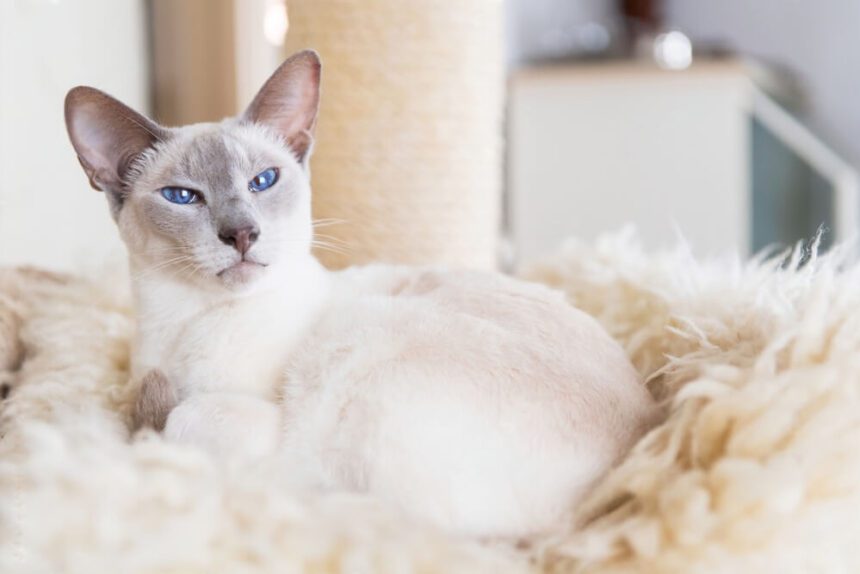Alright, so here’s the deal: You got a cat, right? And this little cat only eating 100 calories a day. You’re probably scratching your head and wondering’, “Is that normal? Should I be worried?” Well, spoiler alert, 100 calories ain’t a lot, even for the tiniest of cats. So yeah, it’s kind of a big deal if your kitty’s not eating more than that.
Now, let’s put things in perspective. Most adult cats need anywhere between 200 and 300 calories per day to keep things purring along smoothly. Think of it like your morning coffee—not enough, and you’re a zombie; too much, and you’re bouncing off the walls. For a cat, 100 calories is like trying to run a marathon on a single granola bar. It’s just not going to cut it.
But hey, before you hit the panic button, let’s dive into the why’s and how’s. Sometimes, there’s more going on than just a picky eater or a stressed-out kitty. We’ll break it down step by step, so hang tight.
Why Your Cat Only Eating 100 Calories a Day

So, your cat’s barely touching its food, and you’re wondering’ what’s up. Let’s explore some reasons this might be happening. There’s no one-size-fits-all answer here, so we’re going to look at the usual suspects first.
Medical Issues
One biggie is health. Cats are notorious for hiding when they’re not feeling great. It’s a survival thing—don’t show weakness and all that jazz. But if your cat’s eating like a bird (no offense to birds), it could be dealing with something serious, like gastrointestinal disorders, kidney disease, cancer, dental problems, or even diabetes. It’s like us when we have a bad toothache or a tummy bug—eating becomes more of a chore than a pleasure. If your cat suddenly reduces its food intake, a trip to the vet is a must.
Stress and Anxiety
Cats are creatures of habit, and when something messes with their routine, it can really throw ‘em off their game. A new house, a new pet, a new baby—even a change in the type of litter you use can stress your cat out to the point where it stops eating. And trust me, cats don’t do well with change. It’s like moving’ the TV remote—suddenly, everything’s in chaos.
Picky Eating Habits
Let’s not forget that some cats are just plain picky. You might’ve thought that fancy, high-end cat food would be a hit, but nope—your cat’s giving it the side-eye. Maybe it’s the texture, the flavor, or even the smell that’s putting your cat off. Or maybe your cat’s just holdin’ out for some people’s food (don’t give in to those big, pleading eyes too often, though).
Age-Related Changes
Aging cats sometimes lose their appetite too. Just like with humans, as cats get older, their metabolism slows down, and they might not need or want as much food. But again, 100 calories is still pretty low, so if your older cat’s not eating, it’s worth checking in with the vet.
When to Worry About Your Cat Only Eating 100 Calories

Alright, so you’re thinking’, “Should I be freakin’ out right now?” Well, not to sound all doom and gloom, but yeah, this is a situation that could get serious if not addressed. Cats need a certain amount of calories to maintain their weight, energy levels, and overall health. And 100 calories? That’s like runnin’ on fumes.
Here’s the thing: if your cat only eating 100 calories a day, it could lead to some serious issues
- Malnutrition: When a cat’s diet lacks essential nutrients, it can lead to severe health problems such as muscle wasting, weakened immune systems, and organ failure.
- Weight Loss: Obvious but crucial to note. Rapid weight loss can be dangerous and indicate underlying health issues like fatty liver disease, which is when the body starts breaking down fat too quickly because it’s not getting enough fuel from food. This can be super dangerous for cats and needs medical attention ASAP.
- Lethargy: Not getting enough calories can make your cat extremely tired and less playful. Your cat’s not going to have the energy to play, groom, or even just be a cat. You might notice your kitty sleepin’ more, looking kind of down, or just not acting like its usual sassy self.
- Poor Coat Condition: A diet lacking in essential fatty acids and proteins can result in a dull, dry coat.
So yeah, if your cat’s been eating this way for more than a day or two, it’s definitely time to get in touch with your vet. They can help figure out what’s going on and get your cat back on track.
Steps to Take If Your Cat Only Eating 100 Calories

Now that we’ve established that 100 calories aren’t enough, what can you do about it? Here are some tips to try and get your kitty to eat more:
Visit the Vet
First things first, book an appointment with your vet. They’ll do a thorough check-up to rule out any medical issues. Blood tests, X-rays, maybe even a little poking and prodding to figure out what’s wrong.
Switch Up the Food
Sometimes it’s as simple as changing the brand or type of food you’re giving your cat. Try wet food if you’ve been sticking to dry, or vice versa. You can also try different flavors or even warm up the food a little to make it more appetizing. It’s like giving them a gourmet meal instead of the same old, same old.
Create a Calm Environment
If your cat’s stressing out, try to figure out what’s causing it and fix it. Maybe set up a quiet, comfy spot for your cat to eat away from other pets or noisy areas. Cats love their peace and quiet when they’re chowing down.
Frequent, Small Meals
Instead of two large meals a day, try offering smaller, more frequent meals. This can be less overwhelming for a cat with a diminished appetite.
Use Appetite Stimulants
If your cat’s really not interested in eatin’, your vet might prescribe an appetite stimulant to help get things moving. There are also some over-the-counter options, but always check with your vet before giving your cat anything new.
Try Hand-Feeding
If your cat’s feeling particularly stubborn, try hand-feeding it. Sometimes the extra attention and encouragement can get your kitty to eat a bit more. Just don’t make it a habit—you don’t want to be hand-feeding your cat for the rest of its life!
Long-Term Solutions for Cats With Low Calorie Intake
So you’ve got your cat eating a little more, but what about the long term? How do you make sure this doesn’t happen again? It’s all about consistency and keeping an eye on your kitty’s health.
Hydration Is Key
Don’t forget about water! Sometimes cats don’t drink enough, especially if they’re eating mainly dry food. Make sure your cat has access to fresh water at all times, and consider adding wet food to its diet to help with hydration.
Regular Vet Check-Ups
Make sure you’re taking your cat to the vet regularly, especially if it’s had issues with eating in the past. Your vet can monitor your cat’s weight and overall health to make sure it’s getting what it needs.
Monitor Eating Habits
Keep track of how much your cat’s eating every day. If you notice any sudden changes, you can address them before they become a bigger problem. It’s kind of like keeping an eye on your own diet—if you suddenly stopped eating your favorite foods, you’d probably want to figure out why, right?
Quality Over Quantity
Make sure you’re feeding your cat high-quality food that’s packed with the nutrients it needs. Sometimes it’s better to spend a little more on good food than deal with the consequences of a poor diet later on.
Stay Consistent
Cats love routine, so try to feed your cat at the same times every day. This helps establish a pattern and keeps your cat looking forward to mealtime. Plus, it makes it easier to spot when something’s off.
Homemade Solutions and Treats
Sometimes, homemade treats can entice a cat to eat more. Here are a few ideas:
- Cooked Chicken or Turkey: Plain, boiled, or baked without seasoning can be a great, high-protein snack.
- Scrambled Eggs: Occasionally, a small amount of scrambled egg can be a nutritious treat.
- Pureed Pumpkin: Not only is it high in fiber, but many cats also enjoy its taste.
When to Seek Help If Your Cat Won’t Eat More Than 100 Calories
So you’ve tried all the tricks, and your cat’s still stuck at 100 calories a day. Now what? If you’ve been dealing with this for more than a few days and nothing seems to be working, it’s time to seek help. Don’t wait too long—the longer your cat goes without eating enough, the harder it is to get back to normal.
Reach out to your vet and let them know what’s been going on. They might suggest further tests or even a referral to a specialist. Remember, your vet is your best resource when it comes to your cat’s health, so don’t be afraid to lean on their expertise.
And hey, if you’re feeling overwhelmed, that’s totally normal. Dealin’ with a cat that won’t eat can be super stressful, especially when you’re not sure what’s going on. Just know that you’re not alone, and there’s help out there for both you and your kitty.
FAQs
What should I do if my cat hasn’t eaten much in several days?
If your cat has been eating only 100 calories or less for more than a day or two, it’s time to see the vet. There could be an underlying health issue that needs to be addressed.
Is it dangerous for a cat to eat so little?
Yes, cats can develop serious health issues if they don’t get enough calories, such as fatty liver disease. It’s important to act quickly if your cat isn’t eating enough.
Can I use appetite stimulants for my cat?
Only under the guidance of your vet. Appetite stimulants can be helpful in getting your cat to eat more, but they should be used carefully and only when needed.
Conclusion
A cat only eating 100 calories a day is a serious issue that requires prompt attention. By understanding the potential causes and implementing effective solutions, you can help your cat return to a healthy, balanced diet. Always remember, the key to a happy cat is a well-fed cat. So, keep those whiskers twitching and that tail wagging with a proper diet and lots of love.
Additional Resources
For further reading on feline nutrition and health, check out:
- American Veterinary Medical Association (AVMA): Great resource for all things pet health.
- International Cat Care: Offers detailed articles on cat health and nutrition.



